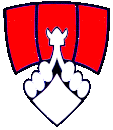Everything started with ...
James Starley's Sewing Machines
1859 - 1877
James Starley's technical talent was discovered while working as an assistant gardener for John Penn. He repaired a sewing machine for his wife. Fortunately for unemployed watchmakers in Coventry, as it turns out....
When James Starley was a young man at Newton, Wilson and Co in London, patent chairs were manufactured and sewing machines from mainly American production were sold in the old company.
But how did Starley get into this company? He was a gardener's assistant at John Penn, a successful engineer. He bought an expensive sewing machine for his wife from Newton. In 1859, Starley repaired the machine after a defect and made various improvements. Recognizing Starley's technical talent, Penn drew the attention of Josiah Turner, one of Wilson's business associates, and ensured Starley's employment at Newton. Soon he made some changes to a double chainstitch machine, which were very successful. Within a very short time he was recognized as a "master of sewing machines".
Already during this time, Starley built the "European" sewing machine in his spare time, which was intended to sew the edges of cuffs or trouser legs after the confection. Josiah Turner admired Starley for it and often visited his home workshop.
On 14 May 1861, Starley left Newton, Wilson and Co. Together with Josiah Turner and the American Silas Covell Salisbury, he founded European Sewing Machine Co in Coventry (other sources cite 1859 as the founding year). The company's original goal was to import and distribute American sewing machines. Salisbury and Starley received a patent for their own sewing machine.
Coventry was looking for employment for unemployed watchmakers at that time. The sewing machine industry was seen as an ideal basis to use the knowledge and talents of the watchmakers. With public support, the company, now known as European Sewing Machine Co, Ltd. under the management of Starley and Turner, began manufacturing the "European","Godiva","Express" and "Swiftsure" sewing machines patented by Salisbury and Starley in November 1862.
Starley's interest in means of transport had already aroused in 1865 - he designed a four-wheeled velocipede with sprung wheels - read more about this on our bicycle pages.
1867 the company name is changed to Coventry Sewing Machine Co, Ltd. .
1868 James Starley receives another patent for "Improvements of sewing machines" under No. 1678.
In the same year, the Paris agent of the company, Rowley B. Turner, the son of Josiah Turner, brings a Micheaux Velociped to Coventry. In his pocket he has an order for the manufacturing of 400 velocipedes built by Coventry Sewing Machine Co Ltd. The Prussian-French war prevents them from being extradited, but the Velocipedes can be sold in England. This means that the company has arrived in a completely different division.
As early as 1869, a major order for further Velocipedes was received - the data of the sources varied between 450 and 600 pieces. The acceptance of the order will be discussed at the shareholders' meeting. Production is agreed, at the same time the company name is changed to Coventry Machinists Company. More about this on our bicycle pages.
Nothing is known about the further production of sewing machines at this company, especially since James Starley leaves in 1870.
In 1872 William Hillman leaves the company, the company is now known as Smith and Starley. The company is very successful, the sewing machines are internationally highly awarded: 1872 Lyon, 1873 Vienna, 1874 London, 1875 Manchester.
In 1873 the company was granted another patent for "Improvements in sewing machines".
James Starley turned more and more towards bicycles and in 1874 received his famous and pioneering patent on tangential spokes.
The interlocking between sewing machine and bicycle construction becomes more and more intensive. Starting in 1875 Haynes & Jefferis built the "Ariel" and other bicycles according to Smith and Starley - designs under licence.
James Starley patented roller skates in 1876.
In January 1877 the Smith and Starley company is deleted. By 1881, Smith, Starley and Co. and Smith and Starley had built a total of around 20,000 sewing machines.
The following table provides an overview of the sewing machine patents and the roller skate patents mentioned. It does not claim to be complete.
| Patents of James Starley or with his participation - sewing machines | ||||
|---|---|---|---|---|
| Year | Country and Number | Patentee(s) | Subject-matter of the patent | Remark |
| 1861 | GB 1045 | Silas Covell Salisbury, James Starley | An improved combination sewing machine | |
| 1861 | GB 1059 | Silas Covell Salisbury, James Starley | Improvements in sewing machinery | |
| 1865 | GB 535 | James Starley | Improvements in sewing machines | |
| 1868 | GB 1678 | James Starley (Coventry Sewing Machine Company) | Improvements in sewing machinery | |
| 1870 | GB 1430 | James Starley (Coventry Machinists Company) | An improvement in sewing machines | |
| 1871 | GB 121 | James Starley (Coventry Machinists Company) | Improvements in sewing machines | |
| 1871 | GB 620 | James Starley | Improvements in the construction of sewing machines | |
| 1873 | GB 133 | William Barthwick Smith, James Starley | Improvements in sewing machinery | |
| 1873 | GB 3090 | William Barthwick Smith, James Starley | Improvements in sewing machines, and in tuck markers to be used therewith | |
| Patente von James Starley bzw. mit dessen Beteiligung - Rollschuhe | ||||
| 1876 | GB 547 | William Barthwick Smith, James Starley | Improvements in wheel or roller skates | |
| 1876 | GB 1164 | William Barthwick Smith, James Starley | Improvements in roller and other skates, which improvements are partly applicable to sledges and other carriages | |
© 2021-2026 by ROVER - Passion / Michael-Peter Börsig

 Deutsch
Deutsch